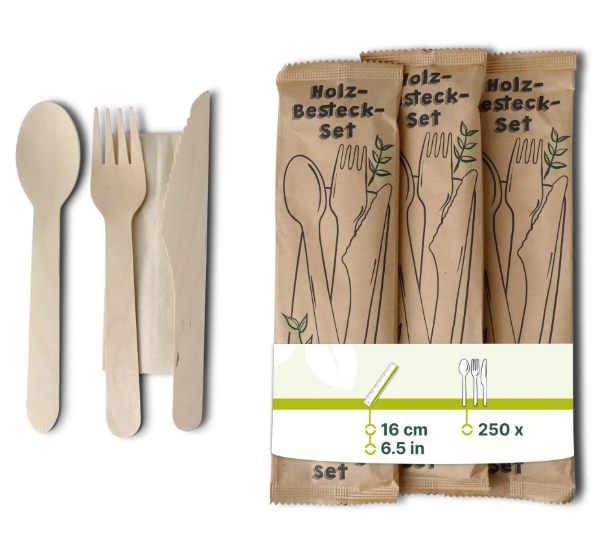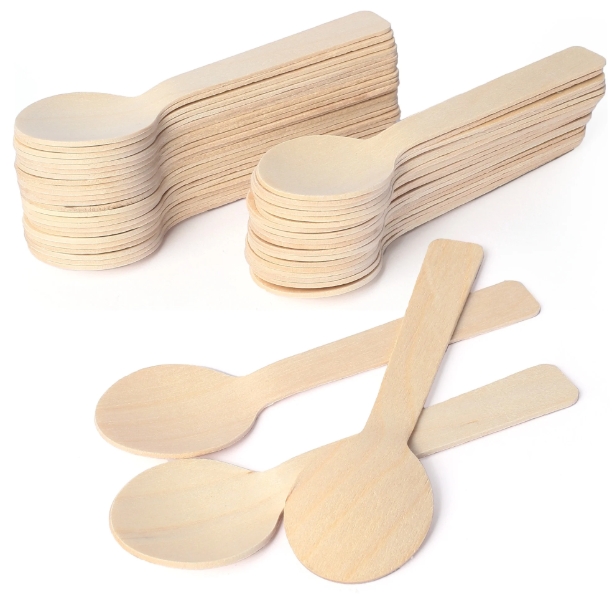
Content Menu
● The Problem with Traditional Disposable Cutlery
● What Is Edible Disposable Cutlery?
● How Is Edible Disposable Cutlery Made?
● Safety of Edible Disposable Cutlery
>> Ingredient Transparency
>> Food Contact and Hygiene
>> Allergen and Dietary Considerations
>> Shelf Life and Storage
>> Functional Safety
● Eco-Friendliness of Edible Disposable Cutlery
>> Biodegradability
>> Zero Waste Concept
>> Sustainable Sourcing and Production
>> Comparison with Other Eco-Friendly Alternatives
● Practicality and User Experience
>> Strength and Durability
>> Taste and Flavor
>> Convenience
>> Cost Considerations
● Challenges and Limitations
>> Storage and Handling
>> Limited Reusability
>> Strength Compared to Metal or High-Grade Plastic
● The Future of Edible Disposable Cutlery
● Conclusion
● FAQ
>> 1. What is edible disposable cutlery made from?
>> 2. Is edible disposable cutlery suitable for all diets?
>> 3. How should edible disposable cutlery be stored?
>> 4. How long does edible disposable cutlery last in hot or cold foods?
>> 5. What happens if edible disposable cutlery is not eaten?
Plastic pollution is one of the most pressing environmental issues of our time. Single-use plastics, especially disposable cutlery, have become a symbol of convenience but also of environmental neglect. As the world seeks sustainable alternatives, edible disposable cutlery has emerged as an innovative solution that promises both safety for consumers and a significantly reduced environmental impact. But how safe and eco-friendly is edible disposable cutlery in reality? This article explores the facts, benefits, and challenges of this emerging trend, providing a comprehensive guide for anyone interested in sustainable living.

The Problem with Traditional Disposable Cutlery
Disposable cutlery made from plastic or polystyrene has long been a staple of fast food, takeout, and outdoor events. However, the environmental cost of these utensils is staggering. Plastic cutlery can persist in the environment for centuries, filling up landfills, polluting oceans, and harming wildlife that mistake small plastic fragments for food. The manufacturing process for plastic utensils also consumes significant energy and releases greenhouse gases, further contributing to climate change.
In addition to environmental harm, health concerns have been raised about the use of plastic cutlery. Chemicals such as BPA and phthalates, often present in plastics, can leach into food, especially when exposed to heat. These substances have been linked to various health issues, making the search for safer alternatives even more urgent.
What Is Edible Disposable Cutlery?
Edible disposable cutlery is a type of utensil made from food-grade ingredients that can be safely consumed after use. These utensils are typically crafted from grains, pulses, and other plant-based materials. After serving their purpose as cutlery, they can be eaten or discarded, where they will biodegrade naturally and quickly, leaving no harmful residue.
Unlike traditional plastic or even some biodegradable alternatives, edible disposable cutlery does not leave behind microplastics or toxic chemicals. If not consumed, it decomposes rapidly, making it a truly zero-waste product.
How Is Edible Disposable Cutlery Made?
The process of making edible disposable cutlery is similar to baking. Common ingredients include wheat flour, millet, rice flour, oat flour, chickpea flour, and sometimes spices or natural flavorings. These ingredients are mixed into a dough, shaped into utensils such as spoons, forks, knives, or straws, and then baked at high temperatures to achieve the necessary strength and durability.
The result is a utensil that is sturdy enough to handle most foods yet remains palatable and safe to eat. Many manufacturers offer a variety of flavors, including sweet, savory, or neutral, to complement different types of meals.
Safety of Edible Disposable Cutlery
Ingredient Transparency
One of the key advantages of edible disposable cutlery is the use of simple, natural ingredients. The materials are similar to those found in everyday kitchens, such as grains and pulses, with no hidden chemicals or artificial preservatives. This makes edible disposable cutlery a healthier alternative to plastic, which can leach harmful substances into food.
Food Contact and Hygiene
Since edible disposable cutlery is intended for consumption, it is produced under strict food safety standards. The baking process not only hardens the utensils but also eliminates potential pathogens. Reputable manufacturers adhere to hygiene protocols and may seek certifications to ensure their products are safe for direct food contact.
Allergen and Dietary Considerations
Most edible disposable cutlery is vegan and gluten-free, making it suitable for a wide range of dietary preferences and restrictions. However, consumers should always check the ingredient list for potential allergens, especially if they have sensitivities to certain grains or pulses.
Shelf Life and Storage
Edible disposable cutlery generally has a shelf life of up to twelve months when stored in its original sealed packaging in a cool, dry place. Once opened, the utensils should be kept in airtight containers to maintain their crispiness and prevent contamination from moisture.
Functional Safety
Edible disposable cutlery is designed to be strong enough for most foods, including hot soups and cold desserts. While it may not be as robust as metal or high-grade plastic, it is engineered to last throughout a meal without breaking or becoming soggy. Some varieties can withstand high temperatures and remain functional in hot or cold foods for up to an hour.

Eco-Friendliness of Edible Disposable Cutlery
Biodegradability
A major advantage of edible disposable cutlery is its rapid biodegradability. If not consumed, these utensils decompose naturally within weeks, whether in compost or landfill conditions. Unlike bioplastics, which may require industrial composting facilities, edible cutlery breaks down in backyard compost bins or even in the open environment, without releasing toxins or microplastics.
Zero Waste Concept
Edible disposable cutlery embodies the zero-waste philosophy. After serving as a utensil, it can be eaten, leaving nothing behind. Even if discarded, it poses no threat to wildlife or the ecosystem. In some cases, wildlife may even consume the discarded cutlery, benefiting from its nutritional content.
Sustainable Sourcing and Production
The ingredients used in edible disposable cutlery are renewable and often sourced from sustainable agriculture. The energy required for production is much lower than that for plastic manufacturing, resulting in a reduced carbon footprint. Water usage is also minimized, as there is no need for washing after use.
Comparison with Other Eco-Friendly Alternatives
Wooden and bamboo cutlery are also biodegradable, but their production can be resource-intensive and may leave behind splinters or residues. Compostable bioplastics, while an improvement over conventional plastics, often require specific conditions to break down fully and can still generate microplastics. Edible disposable cutlery, by contrast, offers a complete solution with no residual waste.
Practicality and User Experience
Strength and Durability
Modern edible disposable cutlery is engineered for practicality and can handle a variety of foods without breaking or dissolving prematurely. However, excessive force or prolonged exposure to liquids may cause some varieties to soften or crack, so they are best suited for single-use scenarios.
Taste and Flavor
Manufacturers often offer edible disposable cutlery in different flavors to enhance the dining experience. The flavors are designed to complement, not overpower, the taste of the meal. Whether sweet, savory, or neutral, the cutlery adds a unique twist to the meal, making it enjoyable for both adults and children.
Convenience
Edible disposable cutlery eliminates the need for washing, saving water and time. It is ideal for picnics, parties, catering events, and food delivery services where convenience and sustainability are equally important.
Cost Considerations
Currently, edible disposable cutlery may be more expensive than mass-produced plastic utensils. However, as demand and production scale increase, prices are expected to decrease. The environmental and health benefits often outweigh the marginal cost difference, especially for businesses aiming to adopt sustainable practices.
Challenges and Limitations
Storage and Handling
Edible disposable cutlery must be stored in airtight conditions to prevent moisture absorption and maintain its crispiness. Once exposed to air, it may soften or become less palatable.
Limited Reusability
As a single-use product, edible disposable cutlery cannot be reused. However, this is consistent with the intended purpose of disposable utensils and is offset by its zero-waste nature.
Strength Compared to Metal or High-Grade Plastic
While suitable for most meals, edible disposable cutlery may not be ideal for cutting through tough or dense foods, such as meat with bones. Users should exercise reasonable care to avoid breakage.
The Future of Edible Disposable Cutlery
As awareness of plastic pollution grows and regulatory pressures increase, the demand for sustainable alternatives like edible disposable cutlery is set to rise. Innovations in ingredient sourcing, production techniques, and flavor profiles are likely to make these utensils more accessible and appealing to a broader audience.
Businesses that adopt edible disposable cutlery not only demonstrate environmental responsibility but also cater to a growing segment of eco-conscious consumers. As technology advances and economies of scale are realized, edible disposable cutlery has the potential to become a mainstream solution for single-use utensil needs.
Conclusion
Edible disposable cutlery represents a significant leap forward in the quest for safe, sustainable, and practical alternatives to plastic utensils. Made from natural, food-grade ingredients, these utensils are safe to use, nutritious, and free from harmful chemicals. Their rapid biodegradability and zero-waste nature make them a standout choice for eco-conscious individuals and businesses alike.
While there are some limitations regarding strength and storage, the benefits of edible disposable cutlery far outweigh the drawbacks. As production methods improve and awareness spreads, edible disposable cutlery is poised to play a crucial role in reducing plastic waste and promoting a healthier, more sustainable future.

FAQ
1. What is edible disposable cutlery made from?
Edible disposable cutlery is typically made from natural ingredients such as wheat, millet, rice, oat flour, chickpea flour, and sometimes spices or flavorings. These ingredients are mixed, molded, and baked to create sturdy, consumable utensils.
2. Is edible disposable cutlery suitable for all diets?
Most edible disposable cutlery is vegan and gluten-free, making it suitable for a wide range of dietary preferences and restrictions. However, consumers should always check the ingredient list for potential allergens.
3. How should edible disposable cutlery be stored?
To maintain crispiness and prevent contamination, edible disposable cutlery should be stored in its original sealed packaging or in airtight containers. Exposure to moisture or frequent handling can cause it to soften or lose its texture.
4. How long does edible disposable cutlery last in hot or cold foods?
Edible disposable cutlery is designed to withstand both hot and cold foods for up to an hour without breaking down. However, prolonged exposure to liquids may eventually cause it to soften.
5. What happens if edible disposable cutlery is not eaten?
If not consumed, edible disposable cutlery decomposes naturally within weeks, either in compost or landfill conditions. It poses no threat to wildlife or the environment and truly embodies the zero-waste concept.

















